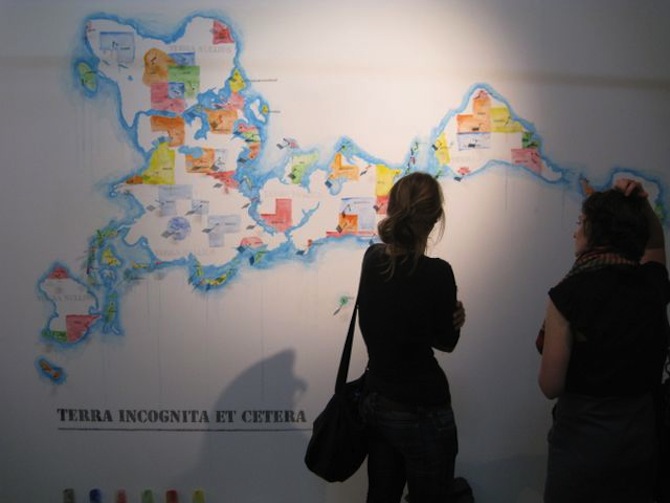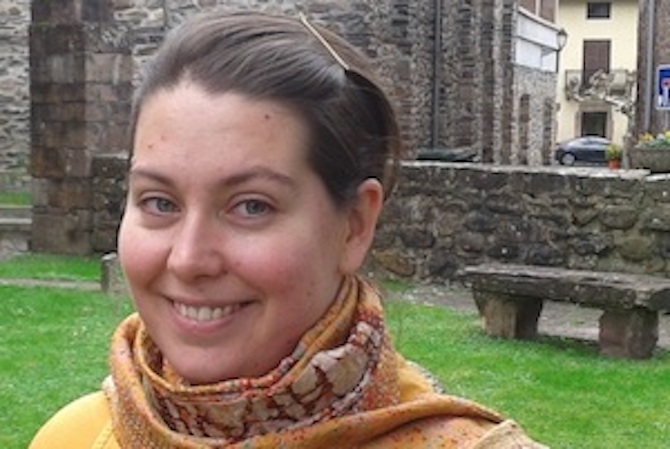Search
To search for an exact match, type the word or phrase you want in quotation marks.
A*DESK has been offering since 2002 contents about criticism and contemporary art. A*DESK has become consolidated thanks to all those who have believed in the project, all those who have followed us, debating, participating and collaborating. Many people have collaborated with A*DESK, and continue to do so. Their efforts, knowledge and belief in the project are what make it grow internationally. At A*DESK we have also generated work for over one hundred professionals in culture, from small collaborations with reviews and classes, to more prolonged and intense collaborations.
At A*DESK we believe in the need for free and universal access to culture and knowledge. We want to carry on being independent, remaining open to more ideas and opinions. If you believe in A*DESK, we need your backing to be able to continue. You can now participate in the project by supporting it. You can choose how much you want to contribute to the project.
You can decide how much you want to bring to the project.

We get in to a taxi. One of my companions places a small map in front of the taxi-driver one of those minimalist, trendy maps handed out at biennales and asks him to take us there, to the “Sharjah Biennial Area”. The man looks first at the map and then at my companion, like Elliot looks at E.T., and he shrugs his shoulders in a way that could say, “I don’t know where it is” or “the hummus has given me indigestion”. He asks her “next to what?” and now it’s my companion who looks at the taxi driver as if he wasn’t of this world. “I don’t know. YOU should know!” she says. It’s the third time we’re in this situation since we got to the Emirates. It’s the third time that we’ve taken a taxi.
This anecdote would be neither here nor there if wasn’t because the Sharjah biennial is actually titled, Re:emerge. Towards a new cultural cartography and it talks, with conceptual, aesthetic and post-colonial conviction, about the need for white, rational “westerners”, to stop considering ourselves the centre of the universe. The lines marked by the biennial follow different routes than the ones that unite Europe with another place (this “other place” informal, exotic, distant, with never-ending natural resources, abundant vegetation and a lot of mosquitos). For example, it reveals the strategic position of the Arabian Peninsula, between Africa and Asia, on a very ancient trade route that leads to cultural exchanges far beyond our ken. And raising our gaze towards the brown city of Sharjah, in which 70% of the population are men, more than half of whom emigrate to other countries in neighbouring continents, with the sea to one side and the desert on the other, in the end you realize it’s true: for the people we cross paths with, this is the centre of the world, and if not this one another, even further from our own.
Getting back to the taxi that manages to get us to the museum. There, the first piece by Saâdane Afif: an arish chair, a traditional textile in Arabia made out of palms, and the transcription of the artist’s interview with the craftsman, in which we read that the latter doesn’t know (nor care) what era the designs are from and in fact changes them according to tourist tastes. The one that is exhibited here follows a model by Enzo Mari from 1974 that he gave Afif, and there are another thirty in the exhibition rooms. Exhibition rooms situated in rustic buildings with interior patios, in the “heritage zone” that is under construction. Given that the architecture in the Emirates has always been ephemeral, and consequently there aren’t any antique buildings, large cities are now constructing supposedly historic centres, ideal and idealized contemporary pasts, that are marvellously complemented with the Enzo-Marian, arish tradition.
All this, what some would consider agreeable little stories are in reality the first two slaps in the face for western, universalising pride. In the first place, because the people in the Emirates (and probably in Pakistan, where many of the taxi drivers were from), don’t have a conception of abstract space, represented in a bi-dimensional conception to a mathematical scale. They look at the map and see what we see when we look at the inscriptions on the mosques: some lovely patterns. They orientate themselves with physical references, distances between known or emblematic spaces, with a totally different intuition about the city. And in second place, they don’t have a concept of past and present like ours. It’s not a problem that the historical zone was constructed yesterday; in fact, in Mecca they are dedicating themselves to the destruction of buildings from the time of Mahoma so that people don’t idolize them. Just as in Japan the sanctuary of Ise, the most important in the Shinto religion, is destructed and reconstructed in an adjacent place every twenty years, to renew its nature.

Many are the supposed natural and rational bases for our way of thinking that are called into question in Sharjah, through the city and the works of art. And also, the very idea of artistic values. If the conception of the past is already so distinct, won’t the philosophical references, art works, ways of playing with formats, techniques and concepts also be? At first it’s hard, for example, to respond to the works of Mohamed Ali Fadlabi, who takes as his point of departure the ecclesiastical painting of Ethiopia mixing them with references to superheroes, retro-futurism, and the music and aesthetics of Sun-ra, amongst others. We feeling completely alienated in front of the calligraphic work by Mouneer Alshaarani, we who instantly understand Jenny Holzer. And maybe our first tendency is to spurn it, just as one spurns what doesn’t fit into our scheme of things, as a defence so as not to recognise our ignorance.
The selection of magnificent pieces (it’s impossible to do justice in such a short article: readers should check out the Sharjah Foundation website and consult it at their leisure) and the feeling of navigating a space where the references are others, end up making us understand that the title, with its towards, as if setting off on a journey, is aimed at us, to our world of art of Documenta, Manifesta, London and New York; to us, heirs to Colon, who are discovering that other ways of representing the vital space exist. In the rest of the world they already knew it. They are already there.

For Haizea Barcenilla art doesn´t seem to exist on its own, but as being interlinked with various social systems, embedded between ideologies and forms of looking, included in exchange networks of, buying and selling, production and exhibition. When she writes criticism, she likes to extend her object of study as much as possible, understanding it through being part of it, considering what her position is. For her, it is impossible to see art without everything else, and everything else without art. And sometimes she manages to interweave the two sides.
"A desk is a dangerous place from which to watch the world" (John Le Carré)